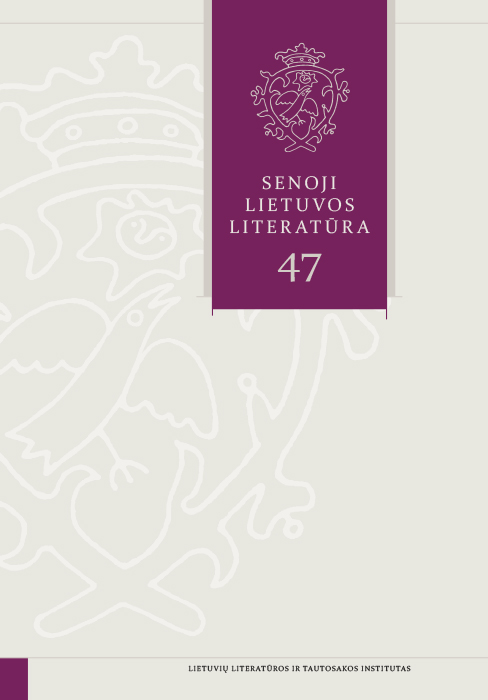Desiderium videndi: Correspondence between Barbara Zápolya and Sigismund the Old
Abstract
In this article, the author analyses the Latin correspondence between Barbara Zápolya (1495–1515) and her husband, Sigismund the Old (1467–1548), published in the collection Acta Tomiciana (Vol. 3, 1853). Although only three of Barbara Zápolya’s letters survived, the analysis suggests the hypothesis that there might have been more of them, at least seven; as for the king’s letters, 24 of them are extant. The correspondence of the royal couple offers a broader picture of the nature of their communication through letters and expression of their feelings, which point to their close and good relationship. Besides, the letters reflect political events of the time, everyday matters of the royal court, and relevant aspects in the life of the royal couple. The analysis focuses on the amount of the correspondence, its frequency, the aims and themes of the letters, their style, expression, and vocabulary. Conventional addresses, epithets, salutations, and the structure of the letters show the tradition and themes characteristic of the correspondence of the ruling class of the period.
On the other hand, abundant emotions, the characteristic style of love letters, phrases revealing the warm relationship between them, and the intimate nature of their vocabulary make it possible to attribute these letters to personal or even romantic correspondence. These texts can, therefore, be labelled as one of the first instances of private and love letters of the ruling elite of the Grand Duchy of Lithuania and Poland. The narrative of the correspondence follows the long-standing European tradition of ars dictandi et amandi found in medieval manuals and collections of love letters; it is made more intense by personal experiences of the corresponding royal couple where emotions are frequently hypertrophied and intensified through the choice of respective vocabulary and the topoi of the love narrative.
The author gives a brief introduction to the medieval peculiarities of love-letter writing that were set out in the manuals of love letters and collections of this kind of letters, paying most attention to the well-known Italian dictator Boncompagnus de Signa (1165–1240), who absorbed much of Ovid’s Ars amatoria in his works. The rules contained in these works, advice and examples are compared with the correspondence of the royal couple, which is discussed in the article: addresses, vocabulary, and self-positioning in relation to the addressee.
The analysis also involves information on the secretaries of these rulers, in particular on Andrzej Krzycki (1482–1537), and on the sources they might have used in structuring and writing the letters of the royal couple.
Most read articles by the same author(s)
- Dovilė Keršienė, Viktorija Vaitkevičiūtė, Mintautas Čiurinskas, Chronicle , Senoji Lietuvos literatūra: Vol. 38 (2014): Senoji Lietuvos literatūra
- Mintautas Čiurinskas, Simona Jaskelevičiūtė, Dovilė Keršienė, Ligita Mikulėnienė , Živilė Nedzinskaitė, Ona Petrėnienė, Kotryna Rekašiūtė, Chronicle , Senoji Lietuvos literatūra: Vol. 44 (2017): Senoji Lietuvos literatūra
- Darius Antanavičius, Dovilė Keršienė, Sigitas Narbutas, Živilė Nedzinskaitė, Annotations , Senoji Lietuvos literatūra: Vol. 37 (2014): Senoji Lietuvos literatūra
- Dovilė Keršienė, Ultima serva: the Letters of Helena of Moscow , Senoji Lietuvos literatūra: Vol. 43 (2017): Senoji Lietuvos literatūra
- Dovilė Keršienė, Illustrissima princeps, serenissima regina et domina clementissima: Epistles of Female Rulers and Noblewomen of GDL in the Late Fourteenth – the First Half of the Sixteenth Century , Senoji Lietuvos literatūra: Vol. 38 (2014): Senoji Lietuvos literatūra
